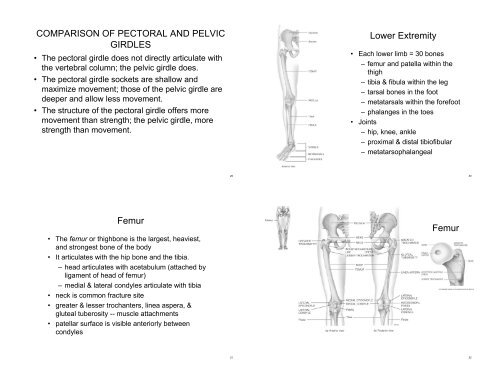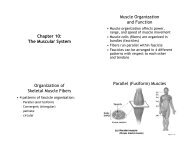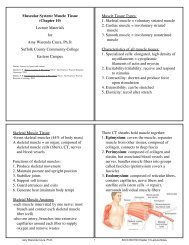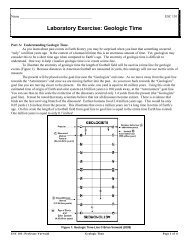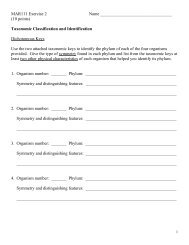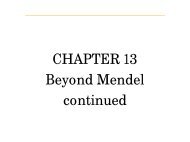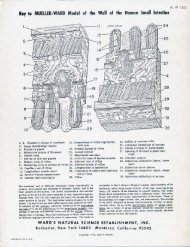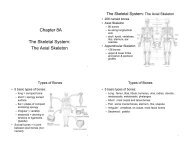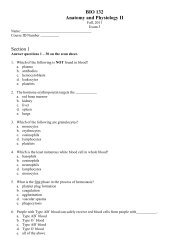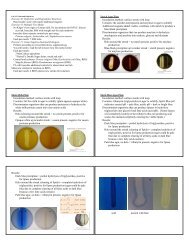Chapter 8B: Skeletal System: Appendicular Skeleton
Chapter 8B: Skeletal System: Appendicular Skeleton
Chapter 8B: Skeletal System: Appendicular Skeleton
Create successful ePaper yourself
Turn your PDF publications into a flip-book with our unique Google optimized e-Paper software.
COMPARISON OF PECTORAL AND PELVIC<br />
GIRDLES<br />
• The pectoral girdle does not directly articulate with<br />
the vertebral column; the pelvic girdle does.<br />
• The pectoral girdle sockets are shallow and<br />
maximize movement; those of the pelvic girdle are<br />
deeper and allow less movement.<br />
• The structure of the pectoral girdle offers more<br />
movement than strength; the pelvic girdle, more<br />
strength than movement.<br />
Femur<br />
• The femur or thighbone is the largest, heaviest,<br />
and strongest bone of the body<br />
• It articulates with the hip bone and the tibia.<br />
– head articulates with acetabulum (attached by<br />
ligament of head of femur)<br />
– medial & lateral condyles articulate with tibia<br />
• neck is common fracture site<br />
• greater & lesser trochanters, linea aspera, &<br />
gluteal tuberosity -- muscle attachments<br />
• patellar surface is visible anteriorly between<br />
condyles<br />
29<br />
31<br />
Lower Extremity<br />
• Each lower limb = 30 bones<br />
– femur and patella within the<br />
thigh<br />
– tibia & fibula within the leg<br />
– tarsal bones in the foot<br />
– metatarsals within the forefoot<br />
– phalanges in the toes<br />
• Joints<br />
– hip, knee, ankle<br />
– proximal & distal tibiofibular<br />
– metatarsophalangeal<br />
Femur<br />
30<br />
32


